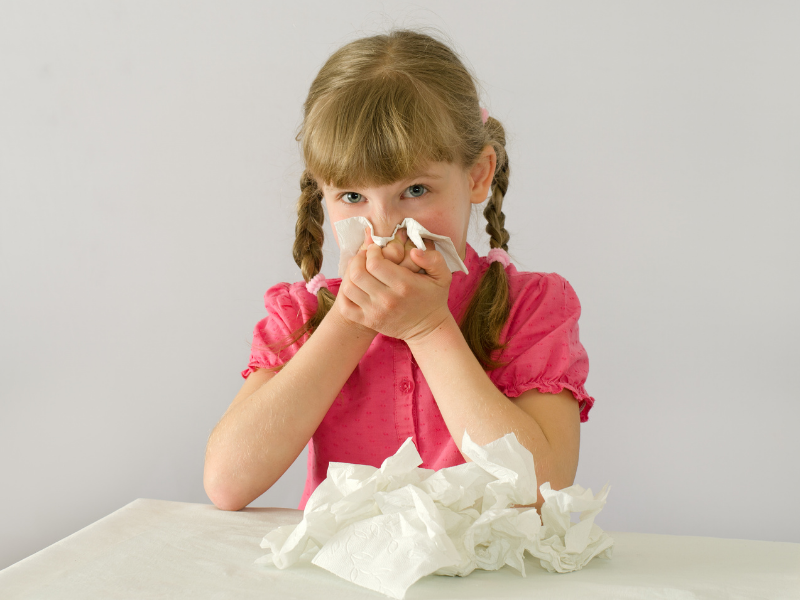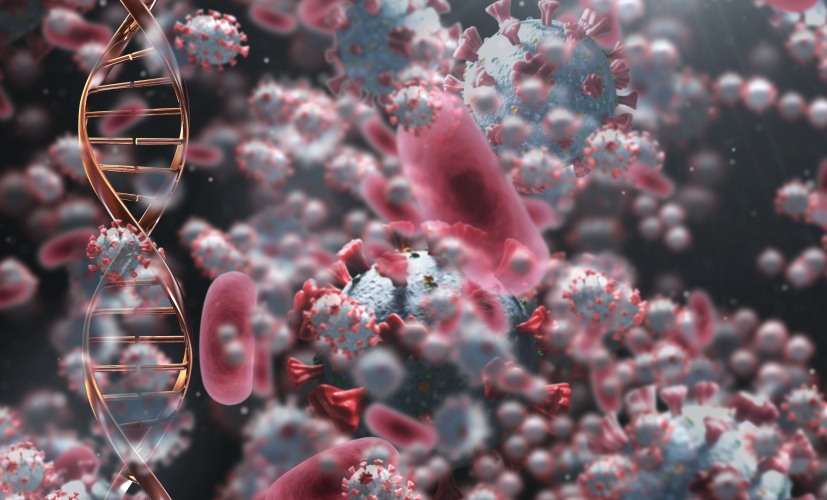
A runny nose poses a real challenge for children and parents alike, especially, if it remains for longer than originally expected. Usually, it disappears only after a couple of days and does not inflict more discomfort than the house being full of used tissues. Problems do arise however, when the secretion provokes coughing, high fever and inflammations in the nasal cavity. These symptoms are also typical for a “normal” viral infection but can also signal the condition of “hay fever’’ or sinusitis. In the following text, we explain how to effectively differentiate between these conditions in children and when it becomes necessary to consult a specialist with your little one.
Where are the sinuses located?
Let’s begin with the fact that small babies don’t possess developed sinusoidal cavities, therefore they don’t fall into the risk contingent. Despite this, problems with their little noses shouldn’t be underestimated, as they can provoke an inflammation of the lattice bone, which forms the upper part of the nasal cavity. This, of course, is an extreme final stage reached only when refusing to take any measures tackling the runny nose of your child, hence we will automatically exclude it as a possibility.
The sinuses are specific cavities in the facial part of the skull and are filled with air in a healthy condition. Scientists claim cavities have no special physiological function but suggest they ensure maximum strength of the facial bones pared with the minimal volume of bone substance. After all, this decreases the skull’s weight and increases the comfort of the brain.
Sinuses fall into several categories and are located in four key locations:
- maxillary: these are the two sinuses around the cheeks.
- frontal: located in the forehead area and only developed after the age of 6-7
- ethmoidal: located above the nasal passages
- sphenoidal: located deeper in the cranial cavity
Very characteristic for sinuses is the epithelial tissue called ‘’mucosa’’ covering their surface, which directly connects them to the nasal cavity. Sadly, precisely this connection ensures easy migration of all viruses and bacteria towards the sinuses, hence do all acute nasal inflammations carry the risk of causing sinusitis. The problem being, when our child becomes sick, the epithelial tissue in the nose grows and thereby blocks all thick secretion from exiting the sinuses. As we know, when secretion is not disposed of, it becomes the perfect breeding ground for sickness inducing microorganism colonies, which in turn cause an infection. Therefore, the first medicine doctors prescribe in such cases aims to shrink the enlarged nasal tissue (e.g., nose drops or solutions against congestion), while also always advising to continue blowing our noses.
Why is headache not a symptom?
Adults often experience accompanying headaches with sinusitis, while children are spared of this symptom. The reason being that their frontal cavities aren’t developed until the age of 6-7 and it therefore becomes practically impossible for an inflammation to occur in that area. If the child experiences headache in combination with its runny nose, this is most likely due to the heightened body fever and not sinusitis.
The real problem is the similarity between sinusitis symptoms and those of a ‘’normal cold’’. These include a clogged nose, watery secretion and light fever. If measures against the runny nose prove useless and the condition persists for longer than a week, while the secretion becomes thick and coloured, the reason is most likely sinusitis or an acute bacterial infection. Specialists add, the younger the child, the more unspecific the clinical image, hence the more difficult it becomes to place an accurate diagnosis. If you have any doubts, you should consult a children’s ENT doctor or an otorhinolaryngologist.
Older children may experience a persistent cough, which sadly cannot be affected by therapy, as it is caused by secretion flowing down the back wall of the nasal cavity. Furthermore, as a result of sinusitis, some children may experience voice changes, puffy eyes, stomach ache and even vomiting, which is most often provoked by secretion reaching the stomach. When all of the above-mentioned symptoms are accompanied by the appearance of bad breath, difficulty in breathing, pain in the teeth or ears and an oedema, the diagnosis is almost certainly sinusitis.
Don’t rush to take antibiotics
Sinusitis by itself is not contagious. However, it is developed as a result of a viral or a bacterial infection, ergo its therapy is directly dependent on the causing pathogens.
Sinusitis can disappear on its own without the need of any additional therapy, when complications are provoked by a virus. Standard measures including nose drops and anti-inflammation medicine are fully sufficient in such cases. Immediately after the infection is managed and the mucous membrane returns to its normal size will the gathered secretion flow out of the sinuses and seize causing problems.
When confronting a bacterial infection however, it becomes necessary identifying the concrete pathogen to choose the correct antibiotic. Additionally, your doctor may prescribe special heat-ray treatment, as warmth positively affects acute sinusitis. In home conditions, putting a warm cloth over your face or forehead aids the blood circulation in the sinus area, liquifies the secretion and improves drainage.
There are cases in which sinusitis is provoked by an allergic reaction of the nasal tissue and they are caused by the so-called hay fever (pollen allergy). The medical term is allergic rhinitis and as you already know, allergic rhinitis is no ordinary runny nose. Specialists then tend to prescribe antihistamines, which supress the allergic reaction responsible for the swelling of the mucous membrane, secretion retention and the sinus inflammation.
Bring your child to a doctor
If the symptoms and complaints of your child persist for longer than 10 days and if after using nose drops the conditions worsens instead of improving, this is a clear sign you need a specialist. The most popular and easy method of diagnosis is a rhinoscopy, which despite sounding scary just consists of a basic examination of the nasal mucous membrane (“scopy”, derived from Greek, means viewing, examining, observing)
When the examination proves unable to determine the risk factor for the sinuses, additional observations must follow – in the form of radiography and ultrasound. Because of the radiation, doctors use it only as a final measure. One of the best methods for examining the sinuses is the computer tomography, but there is a catch, the procedure remains very expensive and is not part of routine diagnosis. It is only used in the heavier cases or when doubts of complications arise.
Extremely important is to continuously examine the condition development in children, as an incorrect therapy may lead to serious complications.
These can be, for example, an inflammation of the eye-surrounding tissues, of the inner and middle ear, as well as conditions of the upper teeth. Even if rare, non-treatment of sinusitis may lead to meningitis or encephalitis. There is also a risk of developing a chronic sinusitis and the reappearance of the symptoms whenever it becomes colder outside or when experiencing a cold.





